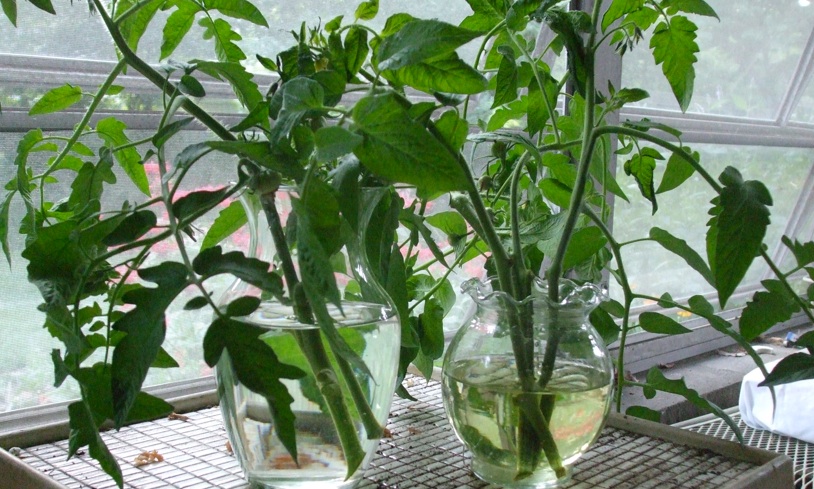
Septoria on tomatoes. (C) Jo Ellen Meyers Sharp
A dreadful disease, septoria (Septoria lycopersci), has attacked my tomato plants, including three heirlooms, a cherry and Better Boy.
More than nine inches above average rainfall this spring and summer likely fueled this fungus disease.
It’s hard to know where the disease came from. It could have come in the soil the plants were growing in when I bought them. Some researchers say that it’s possible that the spores can be carried on seeds, so if a grower used seeds from a contaminated area, it could spread the disease.According to Cornell University, spores may be spread by windblown water, splashing rain, hands and clothing, insects such as beetles and garden tools. The opportunistic disease can show up on tomato plants (Solanum lycopersicum) at any time in the growing cycle, from seedlings to plants just beginning to bear fruit, which is when the fungus hit mine.
At a rapid pace, the lower leaves and stems develop small yellowish brown, round, watery spots. Leaves and stems turn yellow, shrivel and fall off. With that happens, tomatoes can get sunscald and there is less leaf surface to plant process nutrients.
The fungus can survive on the debris of infested plants, so make sure to remove any leaves from the ground. The fungus also can overwinter on other plants in the same family, including the weed, nightshade (Solanum).
Here’s what to do:
- Remove and dispose of diseased foliage. Avoid planting tomatoes in the same space year after year. Rotate every four years.
- Mulch provides a barrier between the soil and the plant.
- Avoid getting water on the foliage and touching wet leaves.
- A copper-based fungicide approved for use on tomatoes can be applied to try and keep the disease from spreading to healthy parts of the plants.
Here’s more info from Iowa State University about this disease.

As a precaution, I took disease-free cuttings from the tomatoes and have them rooting in water. In a week or so, I will replant them in a container with clean soil in the hopes of a late crop of this summer delicacy. (C) Jo Ellen Meyers Sharp